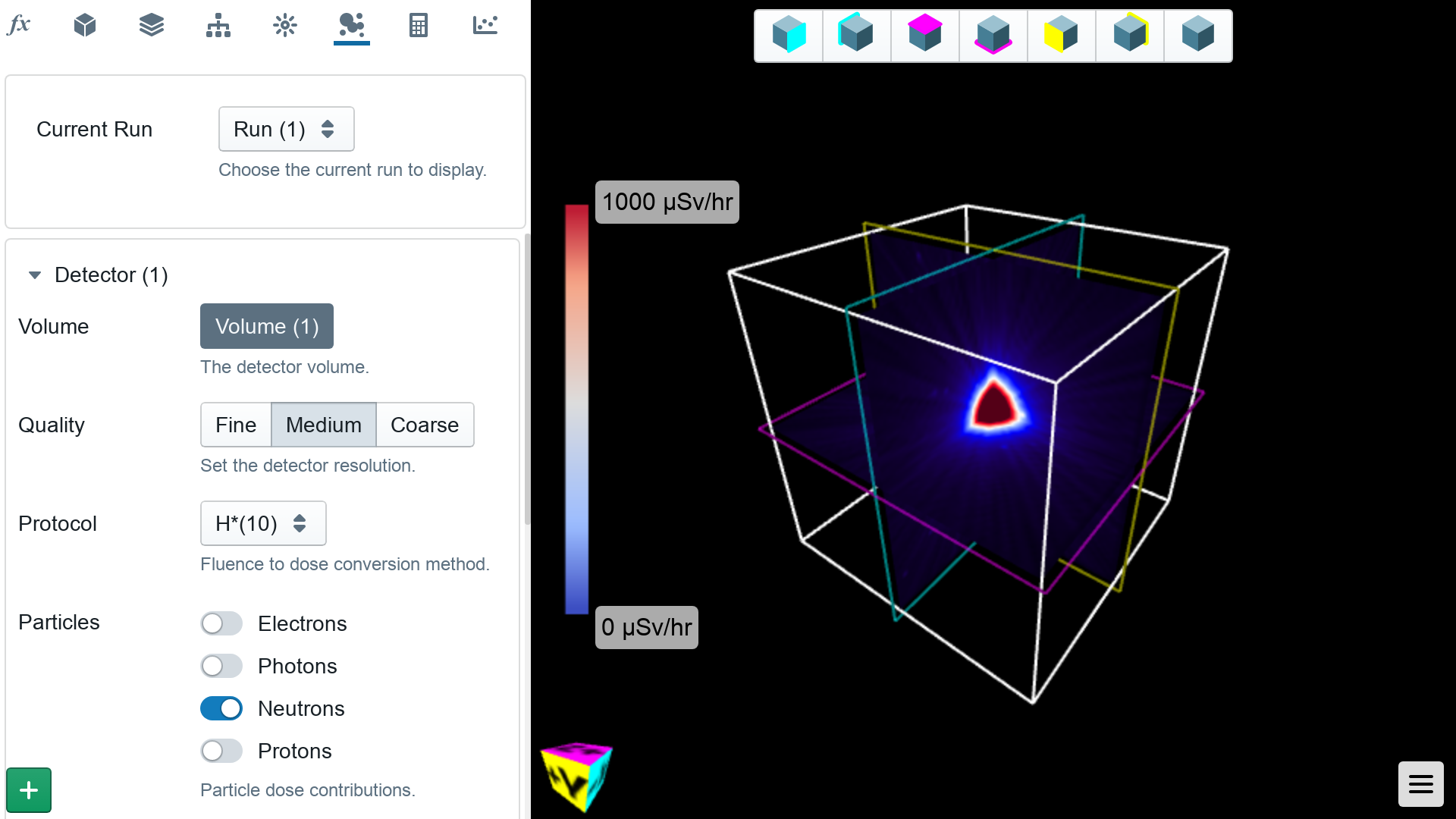Validation and traceability is vitally important when calculating radiation protection quantities. This article is an introduction into the sorts of validation work we do whist developing Shielding Studio. It is also a demonstration of how quickly Shielding Studio can produce useful results in 3D!
Reference Data
There are various sources for measured data for a variety of radiation qualities when we are talking about ambient dose equivalent. Here we use data in this Open Access publication, so that you can read it too!
Saeed, A., et al. “Calculating the ambient dose equivalent of fast neutrons using elemental composition of human body." Applied Mathematics and Computation 274 (2016): 604-610.
Importantly, this publication contains tabulated measured and calculated reference data for ambient dose equivalent for an Americium-Beryllium neutron source at various distances.
The neutron source is contained in a typical X14 capsule within a shielded safe. For our purposes here however, these details are not important. What we really want to know is the source activity, and its mean energy. In this case the nominal source activity is 185 GBq. Assuming a nominal neutron yield of 60×103 n/s/GBq, this gives us a source strength of 1.1×107 n/s (this value is also in the above publication). We will use this value later on when setting the activity of our neutron source in Shielding Studio. As for the nominal energy, lets use the mean energy for an Am-Be source; 4.5 MeV.
Before we build a simulation, lets have a look at the published data (all mSv/hr):
| Distance (cm) | Saeed et. al. | ICRP 116 | Measured |
|---|---|---|---|
| 20 | 3.0 | 2.9 | 2.9 |
| 30 | 1.4 | 1.3 | 1.3 |
| 40 | 0.78 | 0.76 | 0.83 |
| 50 | 0.51 | 0.49 | 0.57 |
| 60 | 0.36 | 0.35 | 0.43 |
| 70 | 0.27 | 0.26 | 0.31 |
| 80 | 0.21 | 0.20 | 0.23 |
| 90 | 0.17 | 0.16 | 0.20 |
| 100 | 0.14 | 0.13 | 0.14 |
Shielding Studio
Our geometry setup is simply an air-filled cube with a 5 m side length. We place a neutron source with a nominal mono-energy of 4.5 MeV at its center, and set the activity to the number of neutrons we expect our Am-Be source to yield per second - in this case 1.1×107 n/s.
Also, activity (or global activity as it is sometimes called) is isotropic - we therefore need to fire off particles in all directions. That is to say, our source is fully divergent. If we don’t specify a fully divergent source, we will need to scale back our source strength accordingly, otherwise we will artificially increase our neutron fluence rate.

The detector is set to the single volume in our assembly; the air-filled box. We choose the ambient dose equivalent or H*(10) protocol, as that is the radiation protection quantity we are examining here.
When we run our simulation we choose to track primary particles only. There will be few secondary particles in this air-only geometry, and tracking any that do emerge will simply slow down our simulation.

Once we have run the simulation (which took less than a minute on my desktop computer for 100,000 primary particles), we can plot and analyse our result on the Charts tab in Shielding Studio.
In the figure below I have plotted the calculated ambient dose (rate) equivalent for neutrons along the z axis (any axis will do though for our isotropic case). You can see from the highlighted point, we are estimating a dose rate of around 125 μSv/hr at about 1 m from the source.

Comparison
To compare our dose rates calculated with Shielding Studio to that reported in the publication we are referencing, we can export the chat data and plot it all together in our favourite spreadsheet program.

The uncertainty in the estimated source strength is around 10%, and at these level we have good agreement between Shielding Studio and the published measured data.
Sources of Uncertainty
There are various sources of uncertainty to consider here. Firstly we are simulating a pure neutron source with a mean energy of an Am-Be source. The true source strength is an estimate at the 10% level, and there is variability in the value we choose for determining the number of neutrons released per Becquerel. Additionally, there is intrinsic uncertainty in converting fluence to dose (this is what Shielding Studio does). Despite this, we can get reliable estimates of ambient dose equivalent in 3D using Shielding Studio with a small amount of effort, and in quick time.
So long as we are aware of these types of uncertainties when calculating radiation protection quantities such as ambient dose equivalent, computer simulations such as these are a powerful tool for the modern radiation protection professional.
In a future blog post we will look at simulating the full decay scheme for Am-Be neutron sources, and discuss the challenges in doing such a thing. Stay tuned…